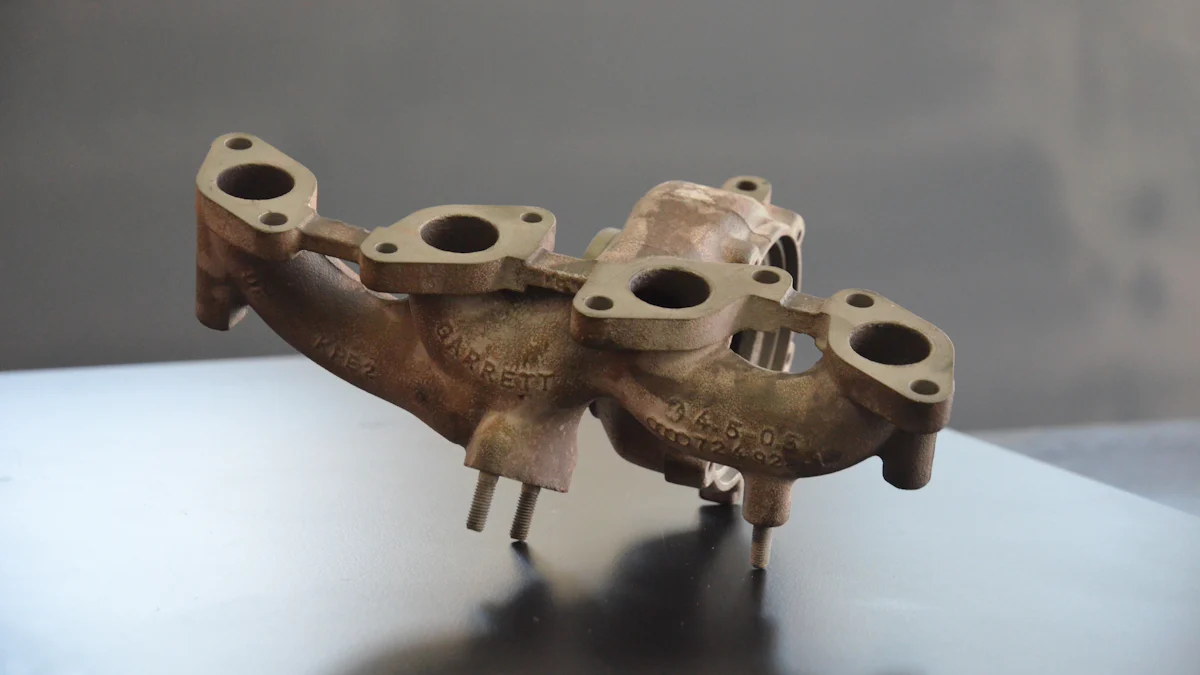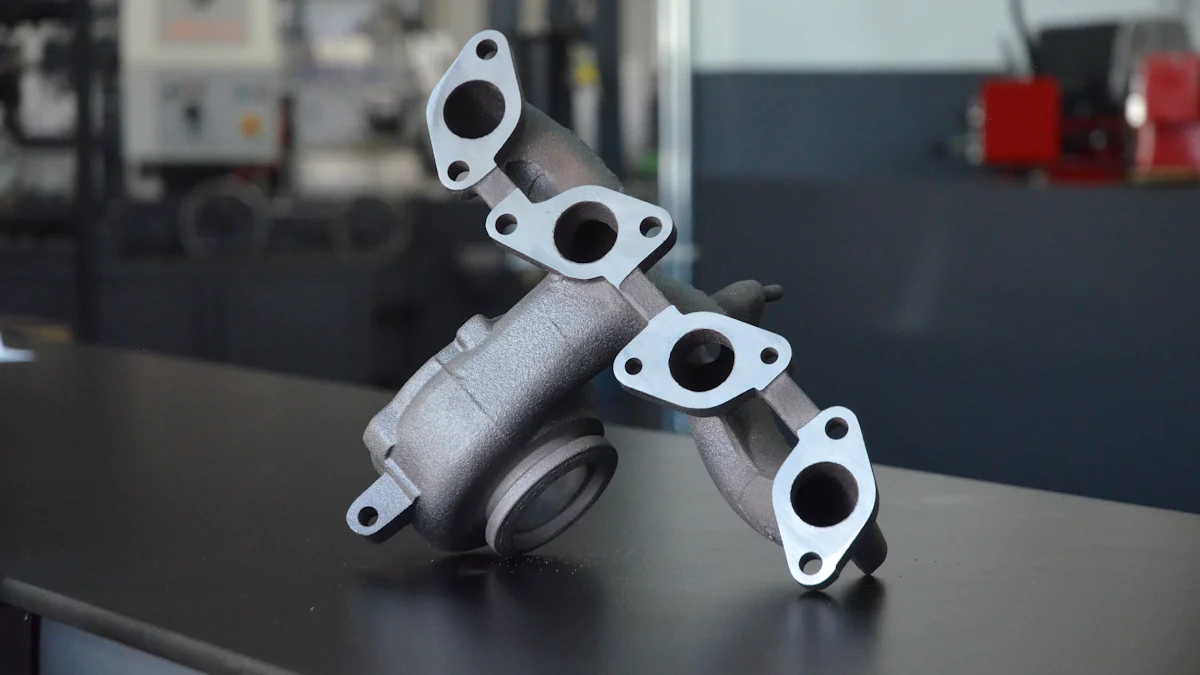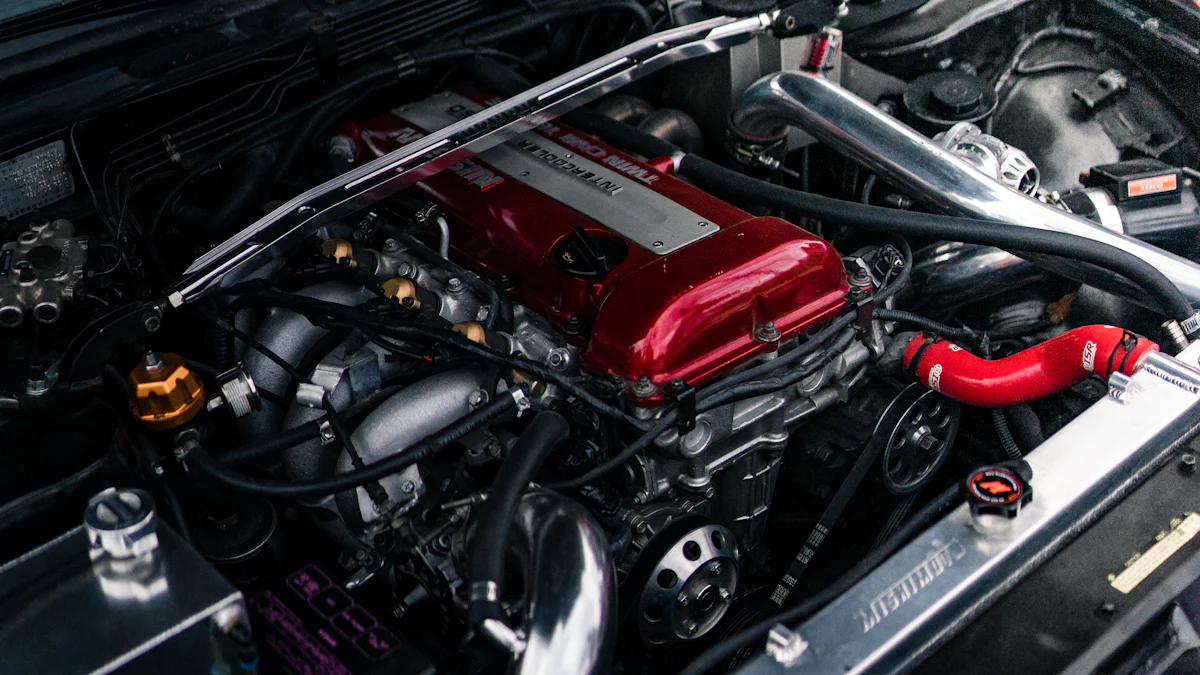
Maintaining the engine exhaust manifold is crucial to ensure optimal performance and safety of your vehicle. Neglecting this component can lead to severe consequences, including leaks and structural damage. Understanding the importance of regular inspections and protective coatings is key to preventing rust buildup. Moreover, knowing effective repair techniques for rusty exhaust manifolds is essential in prolonging the lifespan of your vehicle. By following proper maintenance practices, you can avoid costly repairs and ensure a smooth driving experience.
Prevention Methods for Exhaust Manifolds

When it comes to maintaining your vehicle’s exhaust manifold, implementing prevention methods is paramount in ensuring its longevity and optimal performance. By incorporating regular inspections, protective coatings, and proper maintenance practices, you can effectively safeguard your exhaust manifold from rust buildup and potential damage.
Regular Inspections
To kickstart your prevention strategy, initiating visual checks on a routine basis can provide valuable insights into the condition of your exhaust manifold. By visually examining the surface for any signs of rust or corrosion, you can promptly address any early indications of deterioration before they escalate. Additionally, conducting professional inspections by qualified technicians can offer a comprehensive assessment of the manifold’s health and identify any underlying issues that may require attention.
Protective Coatings
Implementing protective coatings is a proactive approach to shield your exhaust manifold from the corrosive elements it encounters. There are various types of coatings available in the market designed to provide an additional layer of defense against rust formation. When considering protective coatings, opt for high-quality options that are specifically formulated for automotive applications. The application process involves thorough preparation of the surface followed by the precise application of the coating to ensure maximum coverage and durability.
Proper Maintenance
Sustaining your exhaust manifold’s integrity also hinges on adopting proper maintenance practices that mitigate the risk of rust accumulation. Utilizing appropriate cleaning techniques, such as removing debris and contaminants regularly, can prevent rust from taking hold and compromising the manifold’s functionality. Furthermore, avoiding frequent short trips where the exhaust system does not reach optimal operating temperatures can help minimize moisture buildup within the system, reducing the likelihood of rust formation.
Incorporating these prevention methods into your maintenance routine can significantly enhance the lifespan and performance of your exhaust manifold while reducing the need for extensive repairs down the line.
Repair Techniques for a Rusty Exhaust Manifold

When it comes to addressing a rusty exhaust manifold, identifying the extent of rust damage is the initial step in determining the appropriate repair technique. Understanding the difference between surface rust and structural rust is crucial in devising an effective strategy to restore the manifold’s integrity.
Identifying Rust Damage
Surface Rust
To begin, surface rust manifests as a thin layer of oxidation on the exterior of the exhaust manifold. This type of rust typically affects only the surface and does not penetrate deeply into the metal. Despite being primarily cosmetic, surface rust can worsen if left unattended, leading to more severe issues over time.
Structural Rust
In contrast, structural rust poses a greater threat as it penetrates deeper into the metal, compromising its strength and durability. Structural rust weakens the exhaust manifold, making it susceptible to cracks and leaks that can impact overall engine performance. Addressing structural rust promptly is essential to prevent further deterioration and ensure optimal functionality.
Repairing Surface Rust
Sanding and Cleaning
One effective method for repairing surface rust involves sanding down the affected areas to remove the oxidation and reveal clean metal underneath. Using abrasive materials such as sandpaper or a wire brush can help eliminate surface corrosion and prepare the manifold for further treatment. After sanding, thorough cleaning with a degreaser or solvent is necessary to remove any residual debris before proceeding with repair.
Applying Rust Converter
Following cleaning and preparation, applying a rust converter can help halt further oxidation and protect the metal from future corrosion. Rust converters contain chemicals that react with iron oxide, converting it into a stable compound that prevents additional rust formation. Ensure proper application of the converter according to manufacturer instructions for optimal results.
Repairing Structural Rust
Welding Techniques
In cases where structural rust has compromised the integrity of the exhaust manifold, employing welding techniques may be necessary to reinforce weakened areas. Welding involves fusing compatible metals together to strengthen damaged sections and restore structural stability. Professional welders with expertise in automotive repairs can assess the extent of structural damage and perform precise welding procedures to reinforce critical points.
Replacing the Manifold
If structural rust has significantly weakened the exhaust manifold beyond repair, replacing it may be the most viable solution. Installing a new manifold ensures reliable performance and eliminates potential safety hazards associated with compromised components. When opting for replacement, choose high-quality aftermarket manifolds or consult with your vehicle manufacturer for OEM options that meet specifications.
By implementing these repair techniques tailored to address specific types of rust damage, you can effectively restore your exhaust manifold’s functionality and prolong its lifespan. Regular maintenance practices coupled with timely repairs are essential in safeguarding your vehicle’s exhaust system against corrosion-related issues.
Dangers of a Rusty Exhaust Manifold
Health Risks
When exhaust manifolds rust, they can pose significant health risks to both the vehicle and its occupants. Emission leaks are a common consequence of a rusty exhaust manifold, allowing harmful gases to escape into the environment. These leaks not only contribute to air pollution but also expose individuals to toxic substances that can have adverse effects on respiratory health.
To prevent cabin contamination, it is crucial to address any rust issues promptly. A rusty exhaust manifold can compromise the integrity of the entire exhaust system, leading to potential leaks that allow exhaust fumes to enter the vehicle’s cabin. Exposure to these fumes can result in carbon monoxide poisoning, which poses serious health risks and can be fatal if left unchecked.
Vehicle Performance
The condition of the exhaust manifold plays a vital role in determining the overall performance of the vehicle. A rusty exhaust manifold can negatively impact engine efficiency, causing a decrease in power output and fuel economy. When the manifold is compromised by rust, it may fail to effectively expel exhaust gases from the engine, leading to reduced performance and responsiveness.
Moreover, increased fuel consumption is another consequence of a rusty exhaust manifold. The inefficiency caused by rust buildup forces the engine to work harder to compensate for restricted airflow, resulting in higher fuel consumption. This not only leads to increased operating costs but also contributes to environmental pollution due to higher emissions.
Safety Concerns
Structural integrity is paramount when it comes to vehicle safety, and a rusty exhaust manifold can compromise this critical aspect. Rust weakens the metal structure of the manifold, making it more susceptible to cracks and leaks that can escalate into larger issues over time. A compromised exhaust system poses a safety hazard as it may fail unexpectedly, endangering both the vehicle occupants and other road users.
Potential failures related to a rusty exhaust manifold can have severe consequences on overall vehicle operation. From engine misfires and decreased performance to complete system malfunctions, the risks associated with neglecting rust issues in the exhaust manifold are numerous. Addressing these concerns proactively is essential in ensuring safe driving conditions and preventing costly repairs down the line.
In summary, safeguarding your engine exhaust manifold from rust is paramount to ensure optimal vehicle performance and longevity. By implementing proactive prevention methods such as regular inspections, protective coatings, and proper maintenance practices, you can mitigate the risks associated with rusty exhaust manifolds. Timely repairs tailored to address specific types of rust damage are essential in restoring functionality and preventing further deterioration. Remember, regular maintenance is key to avoiding costly repairs and ensuring a smooth driving experience. For future maintenance, consider incorporating these strategies into your routine to keep your exhaust manifold in top condition.
Post time: Jun-07-2024



